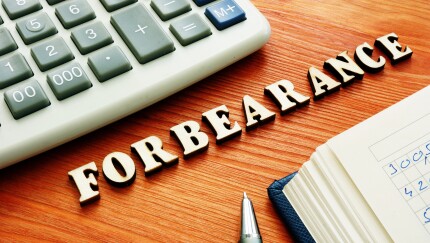The Federal Reserve and Treasury Department have made noises about providing extra help to mortgage servicers who could face a catastrophic spike in delinquencies, but efforts to provide a broad liquidity backstop are still plagued by uncertainty.
The April 1 due date for mortgage payments came and went last week with no action by the Fed or Treasury, which have been in discussions with the industry on a potential liquidity plan in response to the coronavirus pandemic. Instead, Ginnie Mae announced a stopgap measure late last month to advance payments to certain servicers on behalf of delinquent borrowers.
But that reprieve has only magnified questions about longer-term liquidity concerns. The Ginnie plan is temporary and covers only certain portions of the mortgage market — typically low- and moderate-income borrowers. If the crisis stretches on for several months, with defaults expected to reach 10% to 25% or more, many observers say a more comprehensive solution will be needed.
“I hope policymakers realize they have to look at this holistically,” said Ted Tozer, a senior fellow at the Milken Institute and a former president of Ginnie Mae.
On Saturday, the Mortage Bankers Association, the National Association of Realtors and a dozen other housing groups issued a statement begging for action.
“Ginnie Mae’s recent announcement that it intends to establish a liquidity facility for single- and multifamily mortgage forbearance is appreciated and follows congressional intent. However, it will not address servicing advances associated with loans backing Fannie Mae, Freddie Mac, or private-label securities, nor will it address advances of taxes and insurance on loans backing Ginnie Mae securities," the statement said.
“Any further delay could lead to greater uncertainty and volatility in the market."

Ginnie made changes to an existing program that provides short-term liquidity support during disasters to servicers of loans backed by the Federal Housing Administration, Department of Veterans Affairs and other agencies. Servicers of Fannie- and Freddie-backed loans are believed to be facing less severe conditions at the moment.
As a result, the Fed and Treasury say they now believe they only need to act before May 20, the deadline for servicers to advance payments on behalf of borrowers who do not pay their May 1 mortgage pyaments, people involved with the discussions said. One possible longer-term solution under discussion is a liquidity facility in which commercial banks would act as intermediaries providing lines of credit for servicers.
“Somewhere, somehow that liquidity has to be provided,” said Ed Pinto, the co-director of the American Enterprise Institute’s Center on Housing Markets and Finance. “Treasury is saying that Ginnie is dealing with this and that we have some time."
Meanwhile, the bank and credit union regulators issued joint guidance late Friday meant to support servicers' efforts to place borrowers in a short-term forbearance plan as authorized under the recent Coronavirus Aid, Relief, and Economic Security Act.
Ginnie announced changes March 27 to its Pass-Through Assistance Program to make up any shortfall that servicers have in advancing principal and interest payments to bondholders. The program, typically used for disasters, will not declare eligible servicers in default and is expected to be implemented within the next two weeks.
Even so, Seth D. Appleton, a Ginnie executive vice president, said in
“To be perfectly clear, borrowing under the PTAP should be a 'last resort' financing option to alleviate a liquidity shortage faced by any Ginnie Mae issuers,” Appleton wrote.
The FHA also rolled out a COVID-19 National Emergency
'Moral hazard'
Dave Stevens, chief executive of Mountain Lake Consulting and a former head of the FHA, said policymakers and Congress created a "moral hazard" by crafting broad language in the CARES Act that gives any borrower with a federally backed mortgage 180 days of forbearance and another 180-day extension on their mortgage.
"This is a free option that they threw out to the entire U.S. economy in a completely thoughtless manner, and what it’s done to large servicers is they are getting hundreds of thousands of calls, they can't answer the phones, they are inundated online, and they've created a liquidity tidal wave because the servicers have to foot the bill," he said.
Roughly 80% of loans are guaranteed by the government. But the remaining 20% held by banks, credit union and nonbanks are not covered by the CARES Act. Of those, about 5%, or $500 billion of the $11 trilion mortgage market, are whole loans held by nonbanks, legacy mortgage-backed securities and newly issued MBS and nonqualified mortgage loans, some of which are held by large bondholders like PIMCO.
The Biden administration once again extended the pause on student loan payments enacted to help borrowers during the COVID-19 pandemic, this time through the end of August.
The two states' combined plans amount to over $1.5 billion of the Homeowner Assistance Fund included within the American Rescue Plan Act , which was passed a year ago.
An uptick in pandemic-related payment suspensions reflecting new or restarted plan activity previously occurred as the omicron variant spread, but activity has since subsided.
"Congress said one size fits all ... so federally backed loans get six or 12 months of forbearance, no questions asked," said Pinto.
Pinto said cash-strapped borrowers who do not have federally backed loans should be paying their mortgage with funds from unemployment insurance and by taking out Small Business Administration loans.
Fannie and Freddie are less a concern
The head of the Federal Housing Finance Agency, which regulates Fannie and Freddie, said on April 1 that the economic fallout from COVID-19 will be more visible at the FHA, VA and the Rural Housing Service, which all support low- and moderate-income homeowners. The issue is less immediate for Fannie and Freddie because the two mortgage giants have a $240 billion line of credit from Treasury, and could set up their own liquidity platform to fund servicing advances if needed.
"I would really emphasize the place to look right now is the FHA market, with the credit quality of their borrowers,” FHFA Director Mark Calabria said in an
Calabria estimated that 700,000 to 1 million borrowers will ask for forbearance just on loans backed by Fannie and Freddie. But that number is already outdated, said Pinto.
“Events have overtaken that number by a huge amount," said Pinto. Fannie and Freddie would need $60 billion to advance principal, interest, taxes and insurance for six months, he said.
"Fannie and Freddie face a liquidity requirement on par with Ginnie, and Treasury and the Fed will craft something for Fannie and Freddie," Pinto said.
Meanwhile, the Financial Stability Oversight Council announced the
Treasury Secretary Steven Mnuchin is said to be aware that a delay in relief could cripple some servicers, people familiar with the matter said. But the Trump administration is so overwhelmed dealing with the public health crisis, processing direct cash payments to all U.S. households and working through problems with the SBA loan program that mortgage liquidity concerns have been a lower priority.
Many worry that the programs enacted by Ginnie and the FHA are just short-term fixes that buy the administration time.
Panicked borrowers, panicked servicers
Mortgage servicers on the front lines fielding calls from panicked homeowners are growing increasingly worried that a delay in relief will force some into bankruptcy and could force bond investors to take haircuts.
“I’m fearful of all the unintended consequences,” said Tozer. “It’s going to cause havoc in the Ginnie Mae program because investors could potentially lose millions to billions of dollars and will not invest more, and it’s going to hurt low- to moderate-income borrowers.”
The MBA has estimated that if one-quarter of residential borrowers are unable to pay their mortgage and need forbearance, servicers could be on the hook for $75 billion to $100 billion in advances over six months. By comparison, servicers made roughly $10 billion in profits last year.
Unlike banks that have access to Fed liquidity facilities, nonbank mortgage servicers cannot survive for long if they have to make payments on behalf of borrowers for many months.
The Fed declined to comment. Treasury did not respond to a request for comment. The FHFA referred questions to the Fed.
Ginnie Mae and FHA programs bring risk
The temporary Ginnie and FHA programs also have potential pitfalls that create more uncertainty for servicers.
First off, the FHA could take years to process partial claims, which could force servicers to instead buy loans out of Ginnie Mae pools and classify the forbearance as a delinquency, Tozer said. If servicers then try to deliver the loans back into a Ginnie securitization, it could create havoc for bondholders if potentially 50% to 75% of loans are paid off early, Tozer said.
“Prepayments will burn the bondholders, resulting in losses,” which could undermine the value of Ginnie securities particularly among international investors, said Tozer.
Another problem is that the fixes do not address the full amount of advances in the long term if borrowers stop paying for many months, Pinto said. He noted additional risk if property tax and insurance payments become late.
"How do you get the property taxes, homeowners insurance and flood insurance paid?" said Pinto. "The monthly payments sound simple, but it breaks down into seven different streams of money that are all dependent on this forbearance, so the payments are not being made."
He estimates that servicers will need $57 billion just to advance monthly principal and interest payments for roughly six months, assuming 70% of FHA homeborrowers ask for forbearances in May and June.
The primary proposal for a longer-term liquidity solution would involve the Fed launching a facility through banks. Funding could be provided by the recent coronavirus response package passed by Congress. But it is unclear how much appetite banks have in aiding servicers because banks already are shouldering the burden of other programs directing loans to small and midsize businesses.
Lawmakers have told Mnuchin that the Fed should create a liquidity facility as a backstop for stressed mortgage servicers.
Senate Banking Committee Chairman Mike Crapo, R-Idaho, and House Financial Services Committee Chair Maxine Waters, D-Calif., both endorsed the idea.
“The Federal Reserve already has sufficient authority to create a facility to ensure that mortgage servicers have liquidity,” Waters said in a statement. “Congress expects the Fed will act promptly to establish and implement this facility.”








